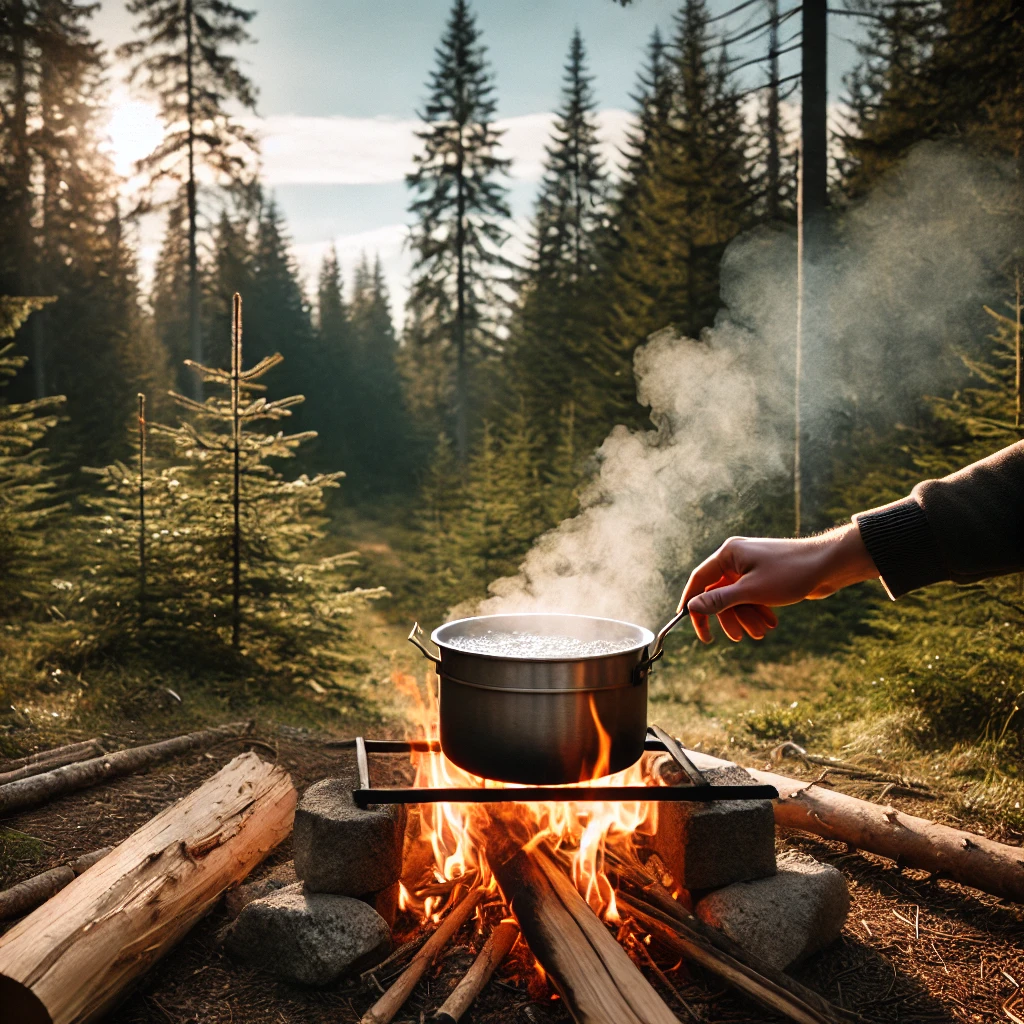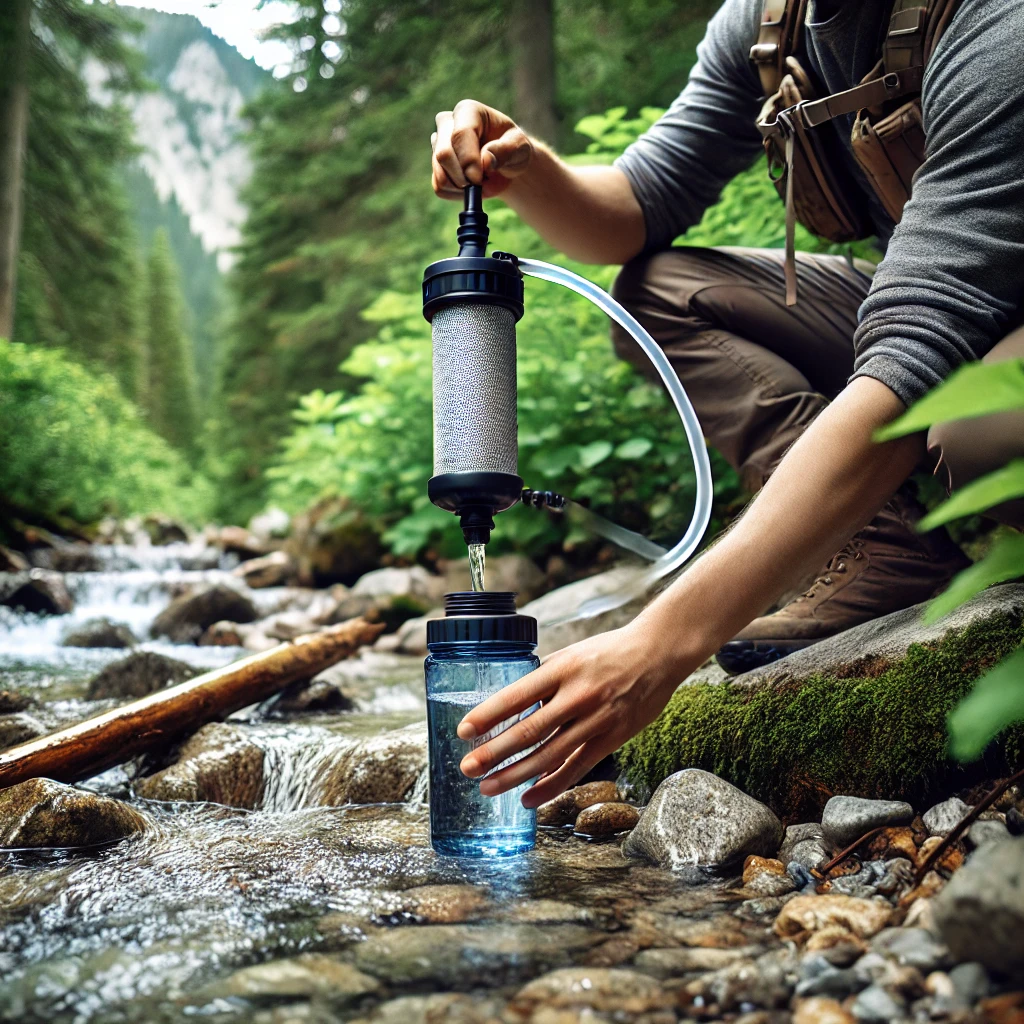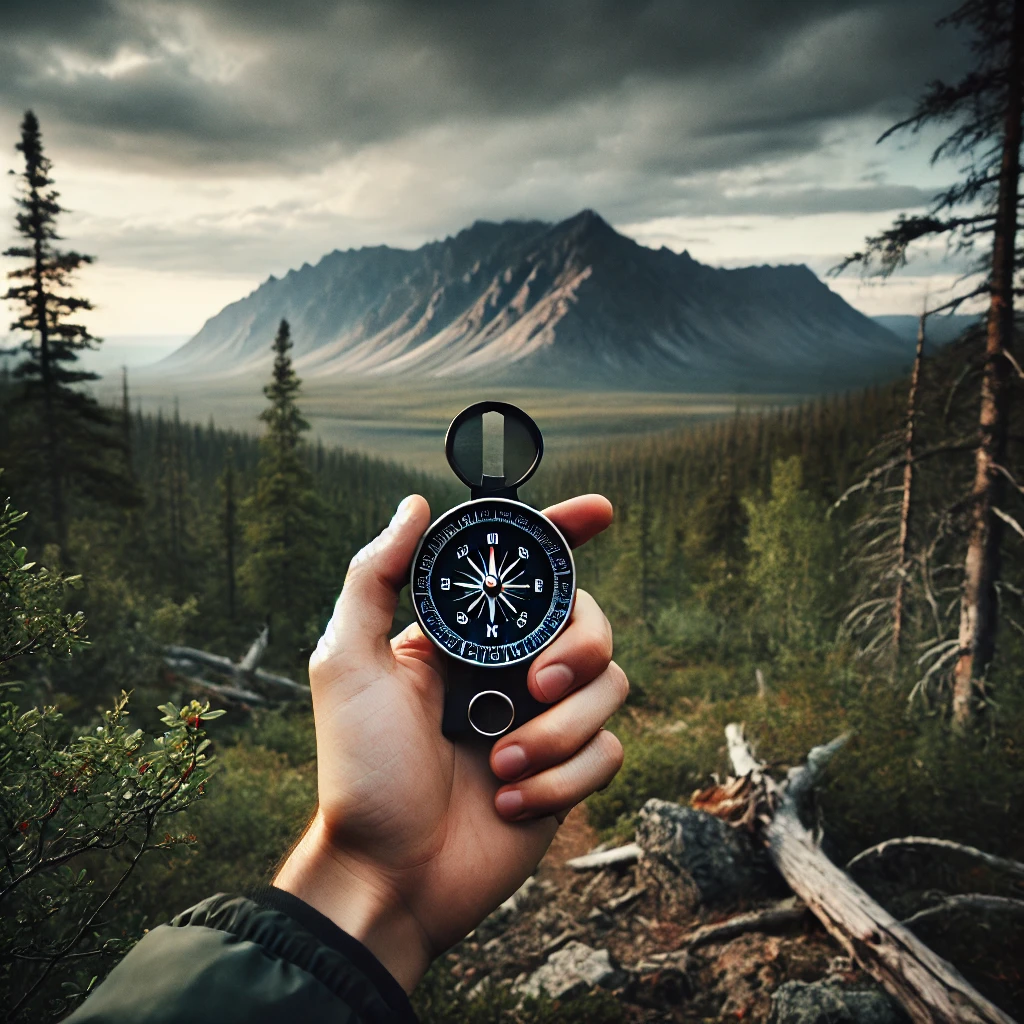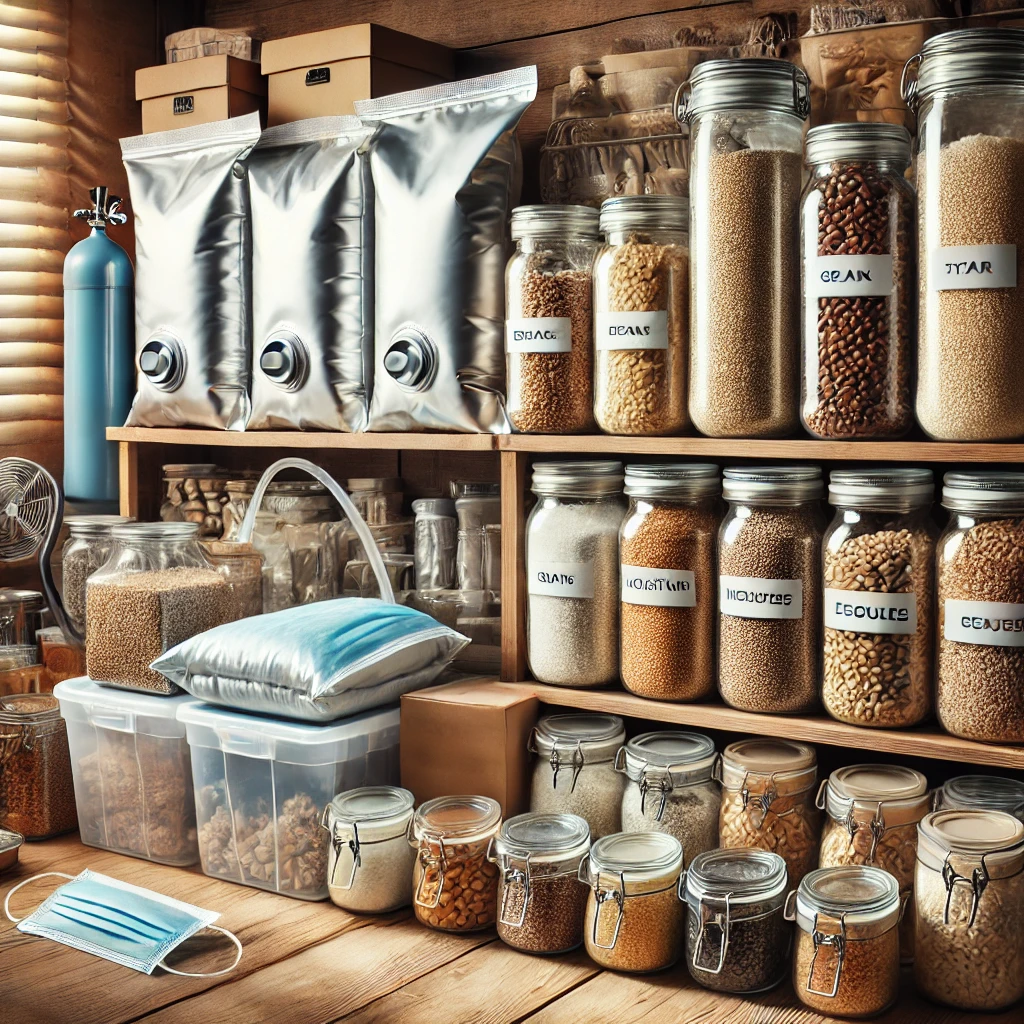Survival & Preparedness
Boiling water to purify, Chemical water treatment, Clean water methods, DIY water purification, Emergency water purification, How to purify water, Portable water filters, Reverse osmosis water filter, Safe drinking water, Solar disinfection (SODIS), UV water purification, Water purification
shahzadt472@gmail.com
0 Comments
Water Purification Methods: How to Make Contaminated Water Safe to Drink
Introduction:
Water is essential for life, but not all water sources are safe to drink. Contaminated water can carry harmful bacteria, viruses, parasites, and chemicals that can cause serious illness. Therefore, understanding effective water purification methods is crucial for ensuring that water is safe to consume, especially in emergency situations, when traveling, or in areas without access to clean drinking water. This article will explore various water purification methods that can make contaminated water safe to drink, discussing both traditional and modern techniques.
1. Boiling
One of the simplest and most effective ways to purify water is by boiling it. Boiling water kills most pathogens, including bacteria, viruses, and parasites. Here’s how to do it:
- How to Boil Water for Purification: Bring water to a rolling boil for at least 1 minute (3 minutes at higher altitudes). After boiling, let the water cool before drinking.
- Effectiveness: Boiling kills 99.9% of pathogens, making it one of the most reliable methods for purifying water.
- Limitations: Boiling does not remove chemical contaminants or heavy metals from water. It also requires a heat source and time for the water to cool down.
2. Filtration
Filtration is another common method for purifying water, especially for removing larger particles such as sediment, debris, and protozoa. There are various types of filters, including portable ones used for camping and hiking, as well as larger systems for homes.
- Types of Water Filters:
- Ceramic Filters: These have tiny pores that trap bacteria and protozoa, but they may not be effective against viruses.
- Activated Carbon Filters: These remove chlorine, pesticides, and some organic chemicals, improving taste and odor.
- Hollow Fiber Membranes: Found in many portable water filters, these are highly effective in removing bacteria and protozoa.
- Effectiveness: Filters are excellent at removing physical contaminants like sediment, as well as certain pathogens, but may not completely remove viruses or chemical pollutants unless designed for those purposes.
- Limitations: Some filters may clog over time, and specific types of contaminants, such as chemicals and viruses, may require specialized filters or additional purification steps.
3. Chemical Purification
Chemical disinfection is a method that uses chemicals such as chlorine or iodine to kill pathogens in water. It’s particularly useful when boiling or filtration isn’t possible.
- Chlorine: Chlorine tablets or drops can be added to water to kill bacteria and viruses. Chlorine is widely used in municipal water treatment.
- How to Use: Follow the manufacturer’s instructions for the correct amount of chlorine to add. Let the water sit for 30 minutes to an hour before drinking.
- Effectiveness: Chlorine kills most bacteria and viruses but may not be effective against some parasites, like Cryptosporidium.
- Iodine: Iodine tablets are another option for chemical disinfection, though they are less effective than chlorine and can leave a strong taste.
- How to Use: Add iodine to the water according to package instructions, and let it sit for at least 30 minutes.
- Effectiveness: Iodine is effective against most pathogens but should not be used long-term due to potential health risks from excessive iodine consumption.
- Limitations: Chemical disinfection may not work well with heavily contaminated or murky water and can leave an unpleasant taste. It also doesn’t remove physical contaminants or chemicals like heavy metals.

4. Ultraviolet (UV) Purification
UV light is a powerful and modern method to disinfect water. Portable UV purifiers use UV-C light to destroy the DNA of bacteria, viruses, and protozoa, rendering them inactive.
- How It Works: A UV purifier is placed in the water, and the UV light is emitted for a set period (typically 60 seconds for small quantities).
- Effectiveness: UV purification is highly effective at killing all types of pathogens, including bacteria, viruses, and parasites, provided the water is clear.
- Limitations: UV purifiers require batteries or a power source, and they are less effective in cloudy or murky water because particles can block the UV light. They also do not remove chemicals or physical debris from the water.
5. Distillation
Distillation involves boiling water and then collecting the vapor, leaving contaminants behind. This method is highly effective for removing both biological and chemical contaminants, including heavy metals and salts.
- How to Distill Water: Boil the contaminated water in a closed system, and collect the condensation in a separate container.
- Effectiveness: Distillation removes nearly all contaminants, including bacteria, viruses, parasites, chemicals, and heavy metals.
- Limitations: Distillation requires significant time, energy, and equipment, making it less practical in survival situations. It also removes beneficial minerals from the water, resulting in flat-tasting water.
6. Solar Disinfection (SODIS)
Solar disinfection is a low-tech method that uses the sun’s UV rays to kill pathogens in water. It’s particularly useful in areas with ample sunlight and limited access to other purification methods.
- How to Use SODIS: Fill clear plastic bottles with water and place them in direct sunlight for 6 to 12 hours, depending on the intensity of the sunlight.
- Effectiveness: Solar disinfection kills bacteria and viruses but may not be as effective against parasites or in cloudy water.
- Limitations: SODIS requires long exposure times and may not be effective in cloudy or rainy weather. It also doesn’t remove chemical contaminants or improve water clarity.
7. Reverse Osmosis
Reverse osmosis (RO) is a more advanced method used in many home and commercial water filtration systems. It forces water through a semipermeable membrane that removes a wide range of contaminants, including bacteria, viruses, chemicals, and salts.
- How It Works: Water is pushed through a membrane with tiny pores that block contaminants, leaving purified water on the other side.
- Effectiveness: Reverse osmosis is highly effective at removing almost all contaminants, including pathogens, chemicals, and heavy metals.
- Limitations: RO systems are expensive, require maintenance, and waste a significant amount of water in the process.
8. Clay or Charcoal Filters (DIY Methods)
In emergency situations, it is possible to use natural materials to create makeshift water filters. Clay and charcoal are commonly used materials for filtering water, especially in survival scenarios.
- Clay Filters: Clay pots can act as simple filters, allowing water to pass through while trapping contaminants in the porous material.
- Charcoal Filters: Charcoal can absorb toxins and chemicals, making it a useful component in homemade water filters.
- Effectiveness: These methods may remove larger particles and improve water quality but are generally not sufficient on their own to eliminate pathogens.
- Limitations: These methods are not as reliable as commercial filtration systems and should be supplemented with other purification techniques like boiling or chemical treatment.
Conclusion
Purifying water is a crucial survival skill that can prevent illness and ensure access to safe drinking water. Each water purification method has its advantages and limitations, and the best method often depends on the situation and the type of contaminants present. Boiling and chemical disinfection are reliable methods for killing pathogens, while filtration, distillation, and reverse osmosis offer more comprehensive purification. In emergency situations, simpler methods like solar disinfection and DIY filters can still provide essential protection. Ensuring access to clean drinking water is not just about survival; it’s about protecting health and well-being, whether you’re in the wilderness, on the move, or facing a natural disaster.




Post Comment